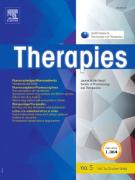The French pharmacovigilance surveys: A French distinctiveness, a real input - 15/10/21
 , Baptiste Jacquot a, Claire Ferard a, Anne-Charlotte Thery a, Céline Mounier a, Aurélie Grandvuillemin b, Annie-Pierre Jonville-Béra c, Marie-Christine Perault-Pochat d
, Baptiste Jacquot a, Claire Ferard a, Anne-Charlotte Thery a, Céline Mounier a, Aurélie Grandvuillemin b, Annie-Pierre Jonville-Béra c, Marie-Christine Perault-Pochat dRéseau français des centres régionaux de pharmacovigilance
| páginas | 7 |
| Iconografías | 1 |
| Vídeos | 0 |
| Otros | 0 |
Summary |
Introduction |
According to French guidelines on good pharmacovigilance practices, a pharmacovigilance survey is an assessment of the available drug safety data. It is requested by the French national agency for medicines and health products safety (ANSM). The objective is to validate a signal, to characterize it, or to provide strengthened monitoring of a drug.
Material and methods |
All the available data were retrieved by ANSM/Regional Pharmacovigilance Centers (RPC) and assessed by a nominate RPC which provides a report for discussion during the monthly Committee between ANSM and the Regional Pharmacovigilance Network (RPN). A descriptive analysis of the minutes available on the ANSM website between 2016 and 2018 has been done: objective, data sources, duration of the survey, number of suspected adverse drug reactions, nature of the drugs and of the signals and recommendations for actions.
Results |
Between 2016 and 2018, a total of 115 surveys were discussed concerning 135 drugs, mainly from the nervous system according to the anatomic therapeutic chemical classification (n=31, 27%). They involved a whole pharmacological class for 18 ones. The main objective of the 115 surveys was to provide a strenghtened monitoring for some drugs (72%) or to validate one or more than one signal (28%). Result from surveys allowed to detect one or several new potential safety signals in 63 ones (55%), an off-label-use in 12 (10%) or to characterize some others signals in all the studies. The Committee recommended one or several actions by survey: 67 prolongations (58%) of the survey and regulatory or investigatory actions which included 43 European actions (37%), 37 label changes (32%), 30 national communications (26%) and 29 additional monitoring (25%).
Discussion/conclusion |
The current process allows a collegiate, clinical and pharmacological discussion with integration of the regulatory framework. A significant number of new signals are detected and/or validated. This efficient tool which is unique in Europe and is allowed by the decentralized pharmacovigilance which leads to a great reactivity of decision-making. It has to be reassessed and to be adapted continuously to the new challenges of the growing multiplication of signals.
El texto completo de este artículo está disponible en PDF.Keywords : Pharmacovigilance, Surveys, Drug safety, Regulation in pharmacovigilance
Esquema
Vol 76 - N° 5
P. 441-447 - septembre 2021 Regresar al númeroBienvenido a EM-consulte, la referencia de los profesionales de la salud.
El acceso al texto completo de este artículo requiere una suscripción.
Bienvenido a EM-consulte, la referencia de los profesionales de la salud.
La compra de artículos no está disponible en este momento.
¿Ya suscrito a @@106933@@ revista ?

